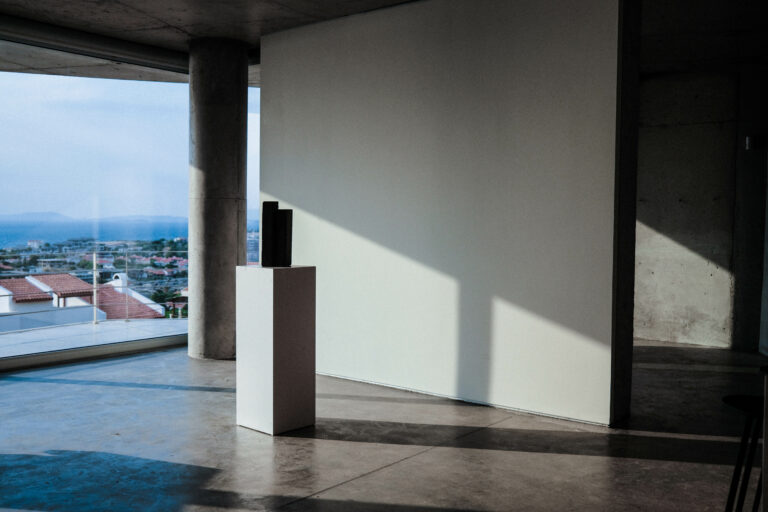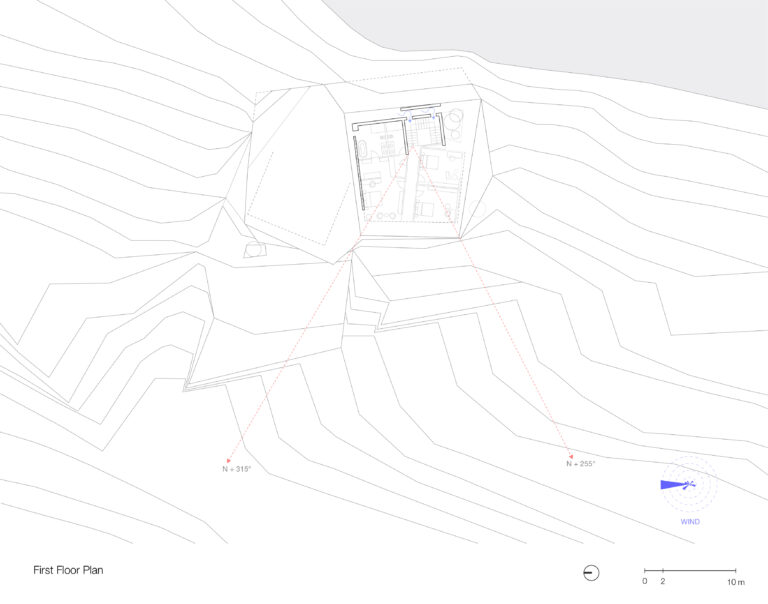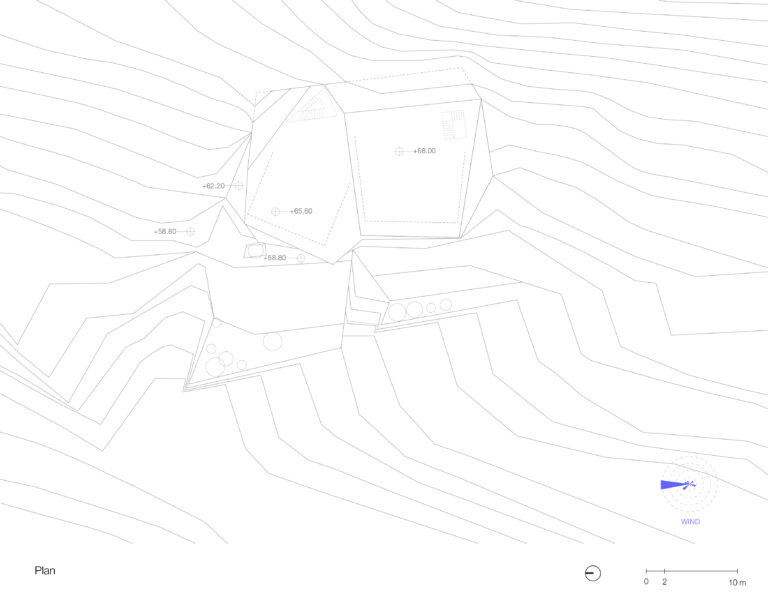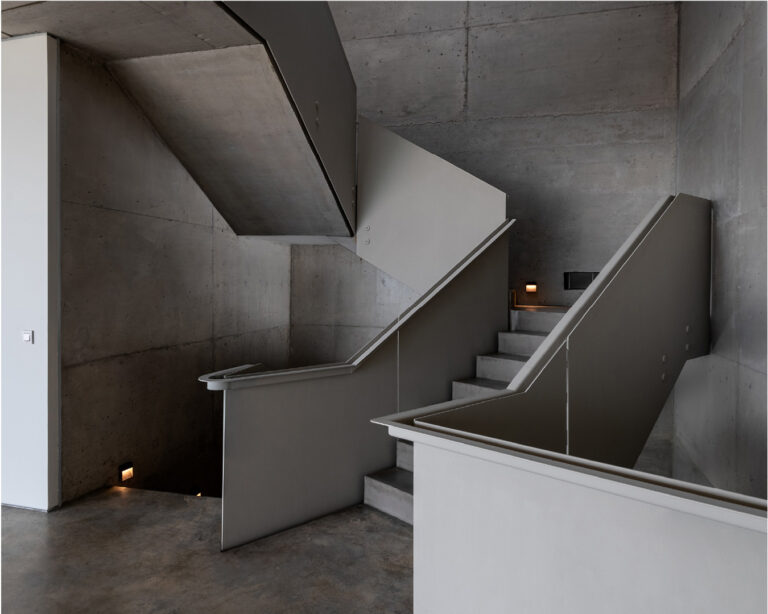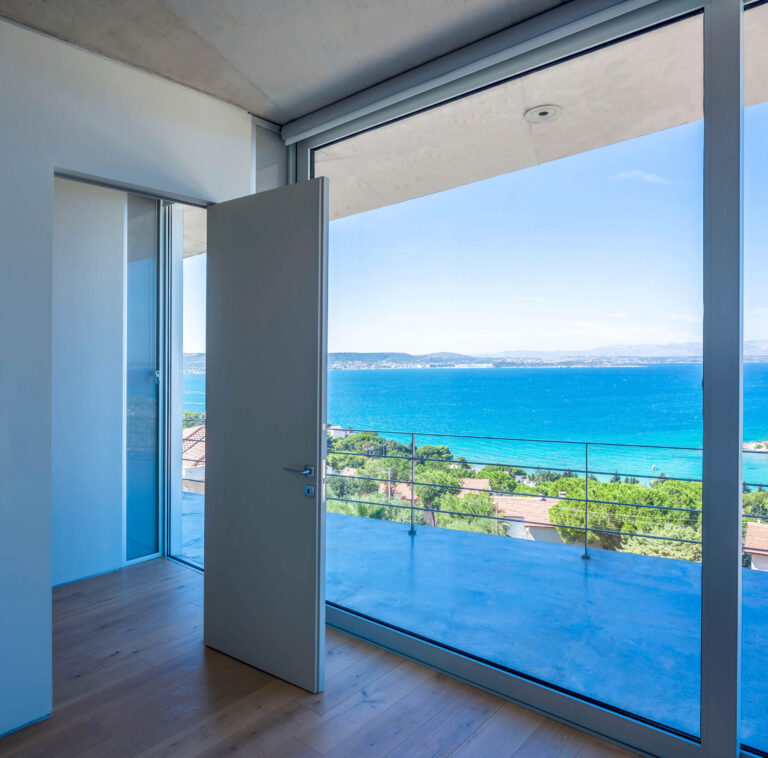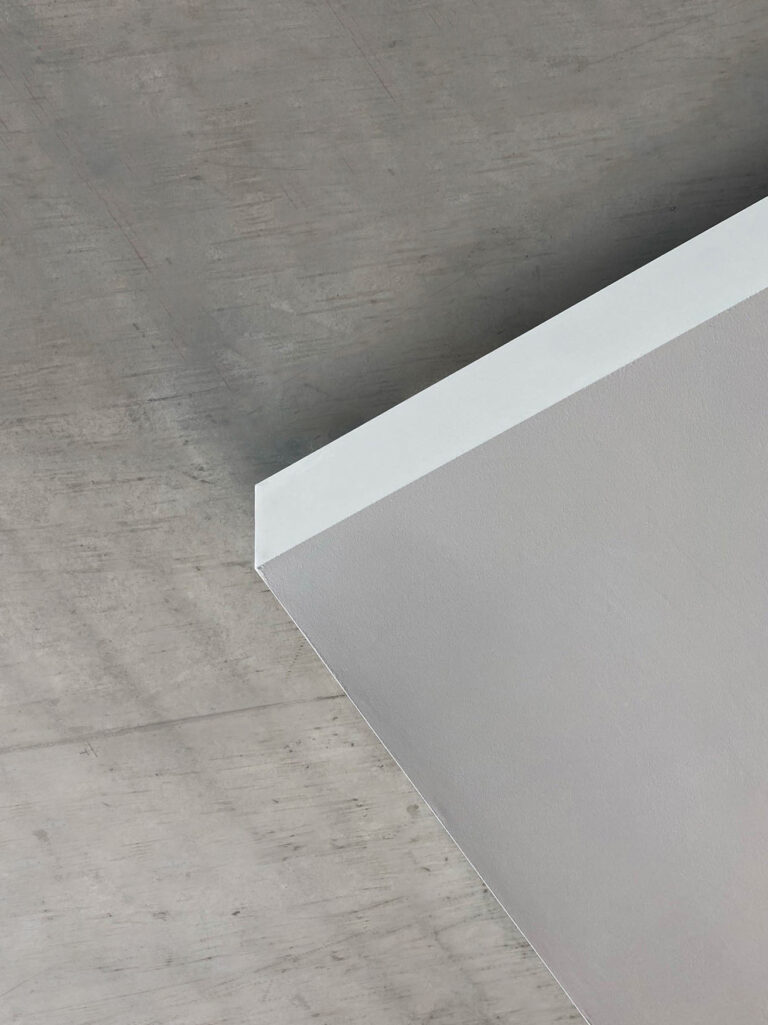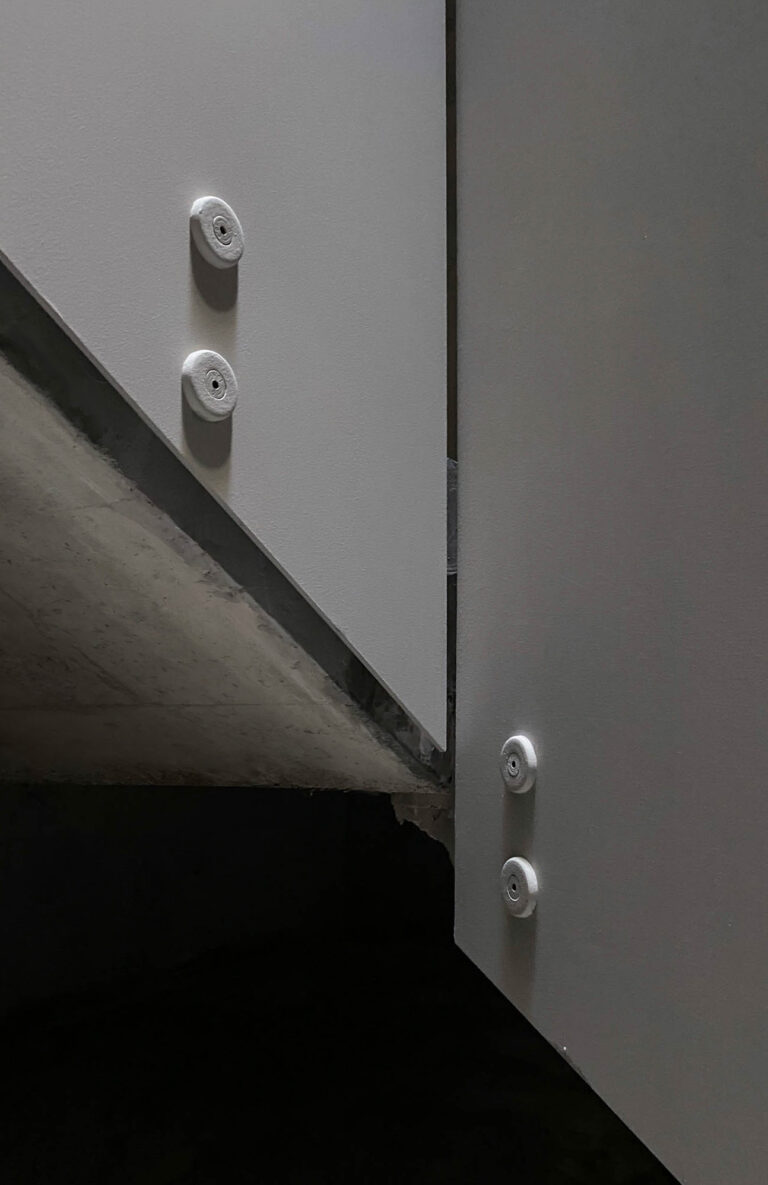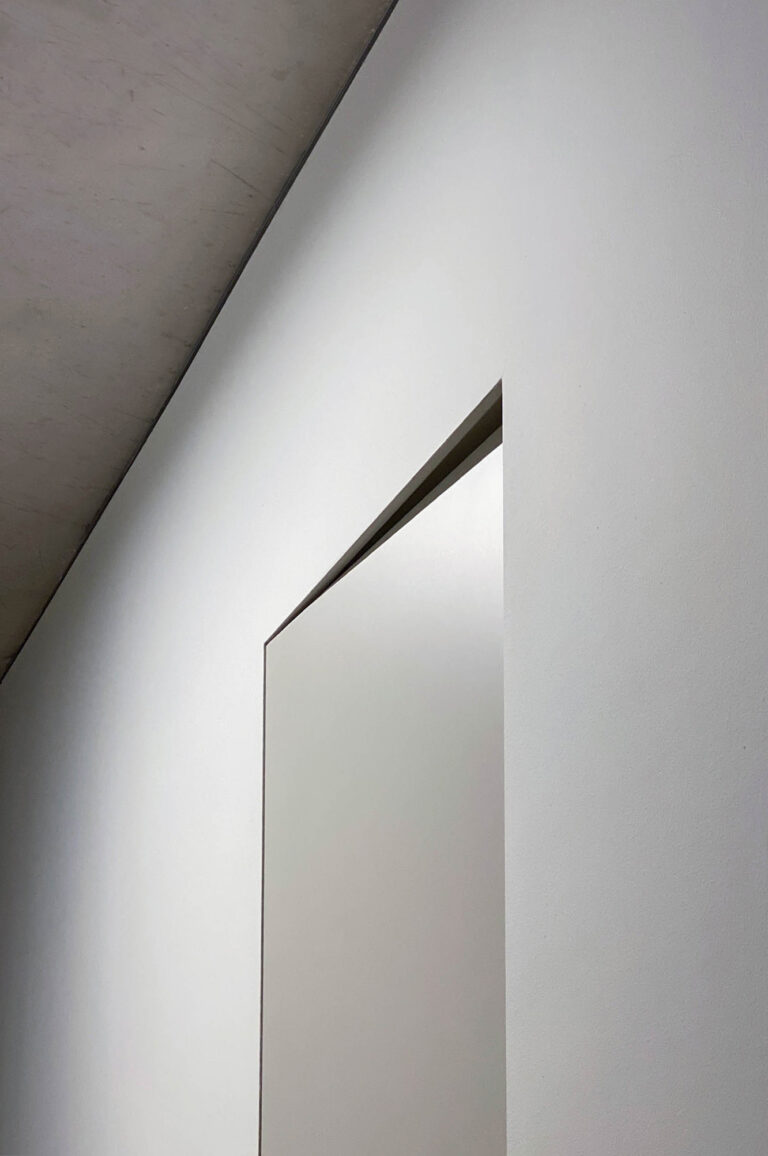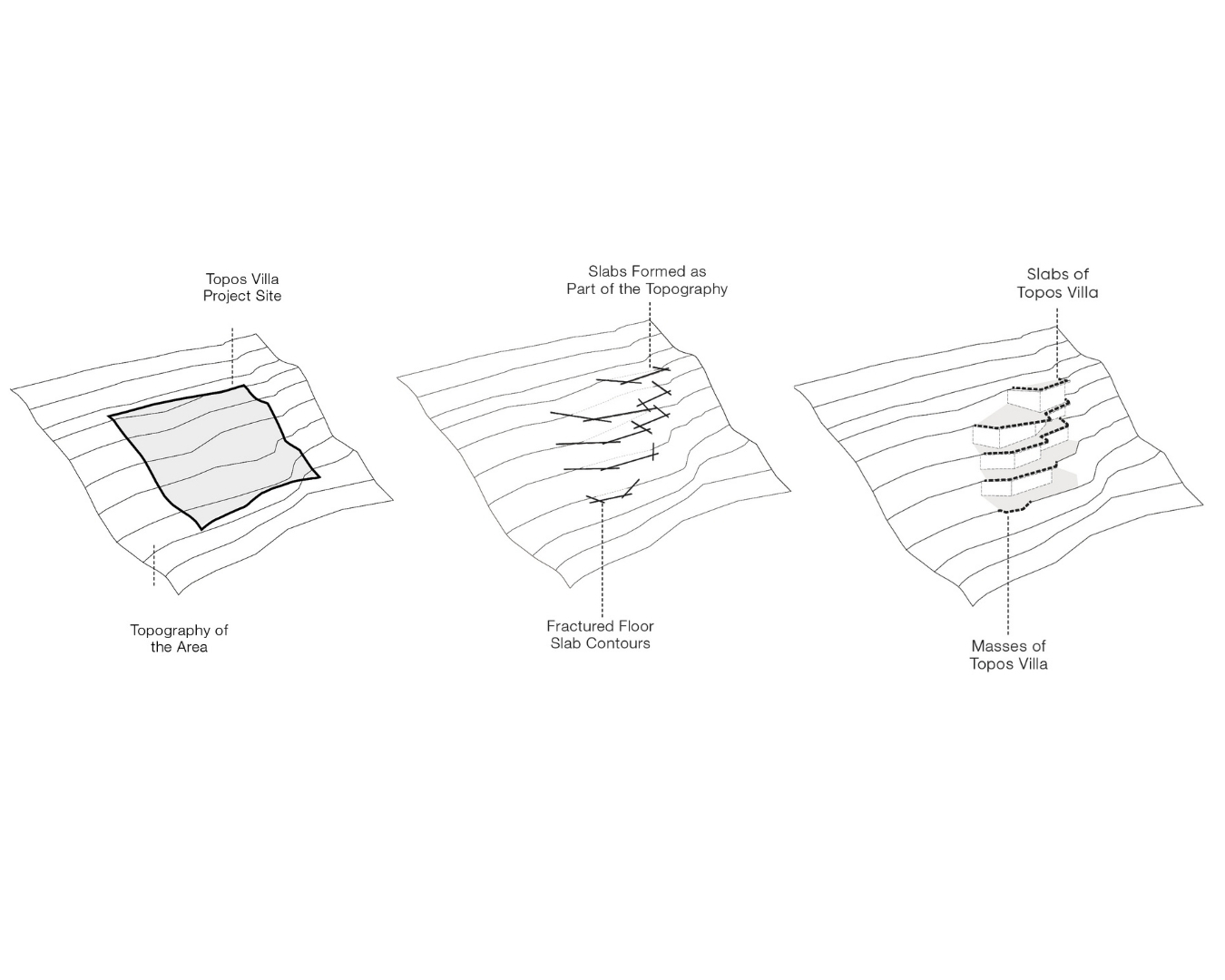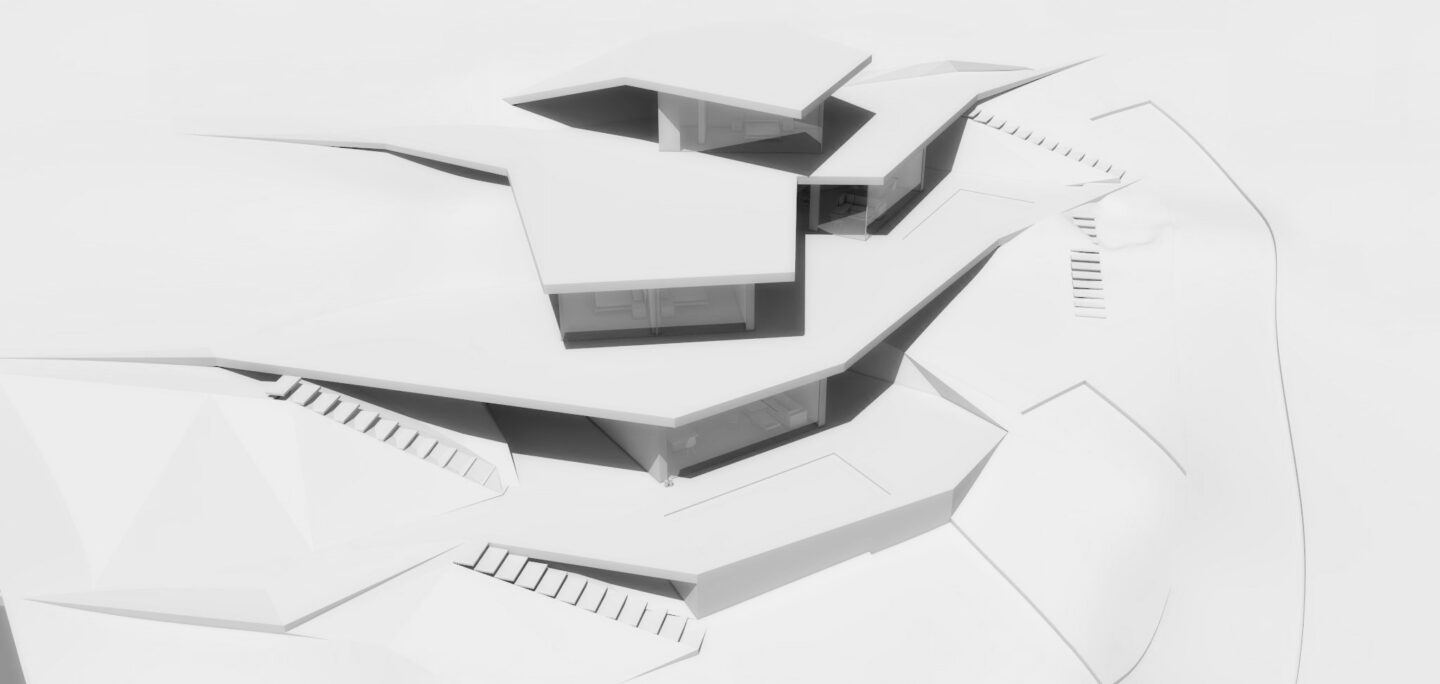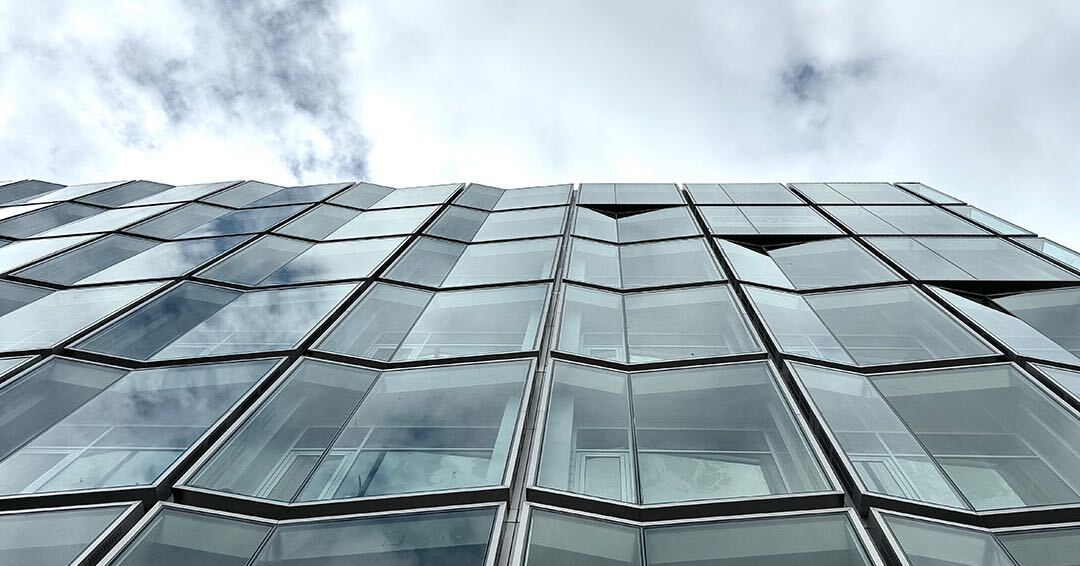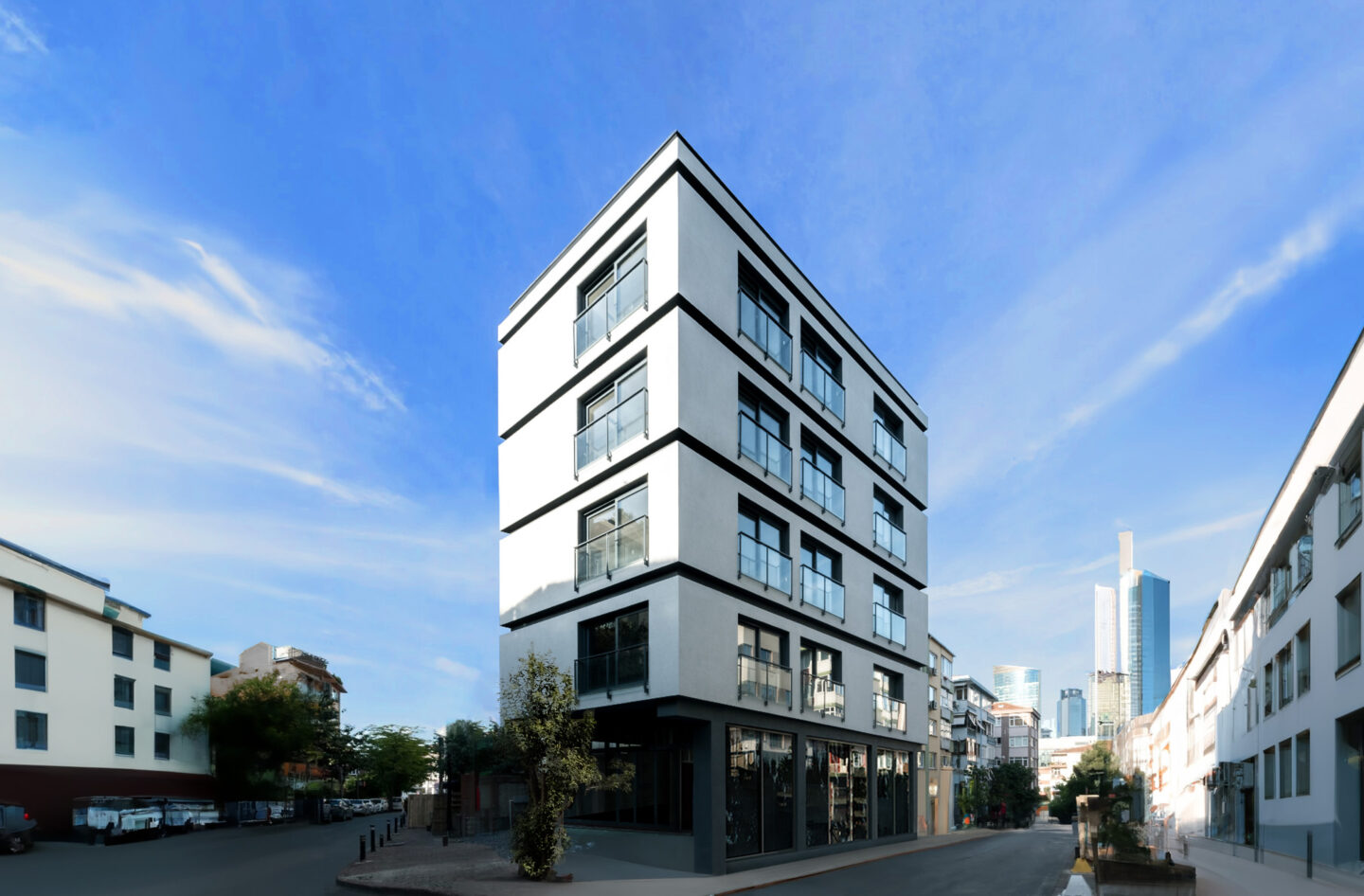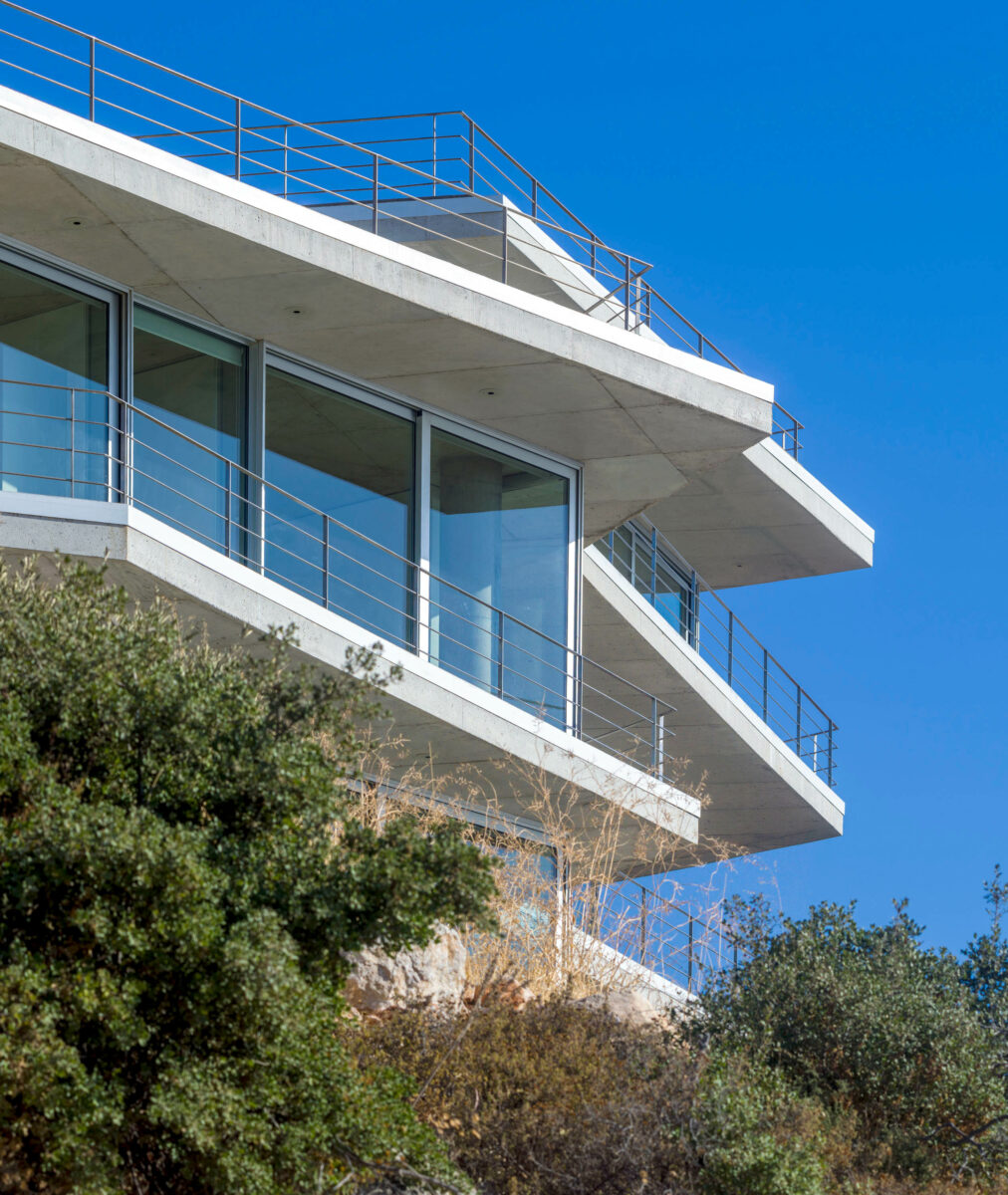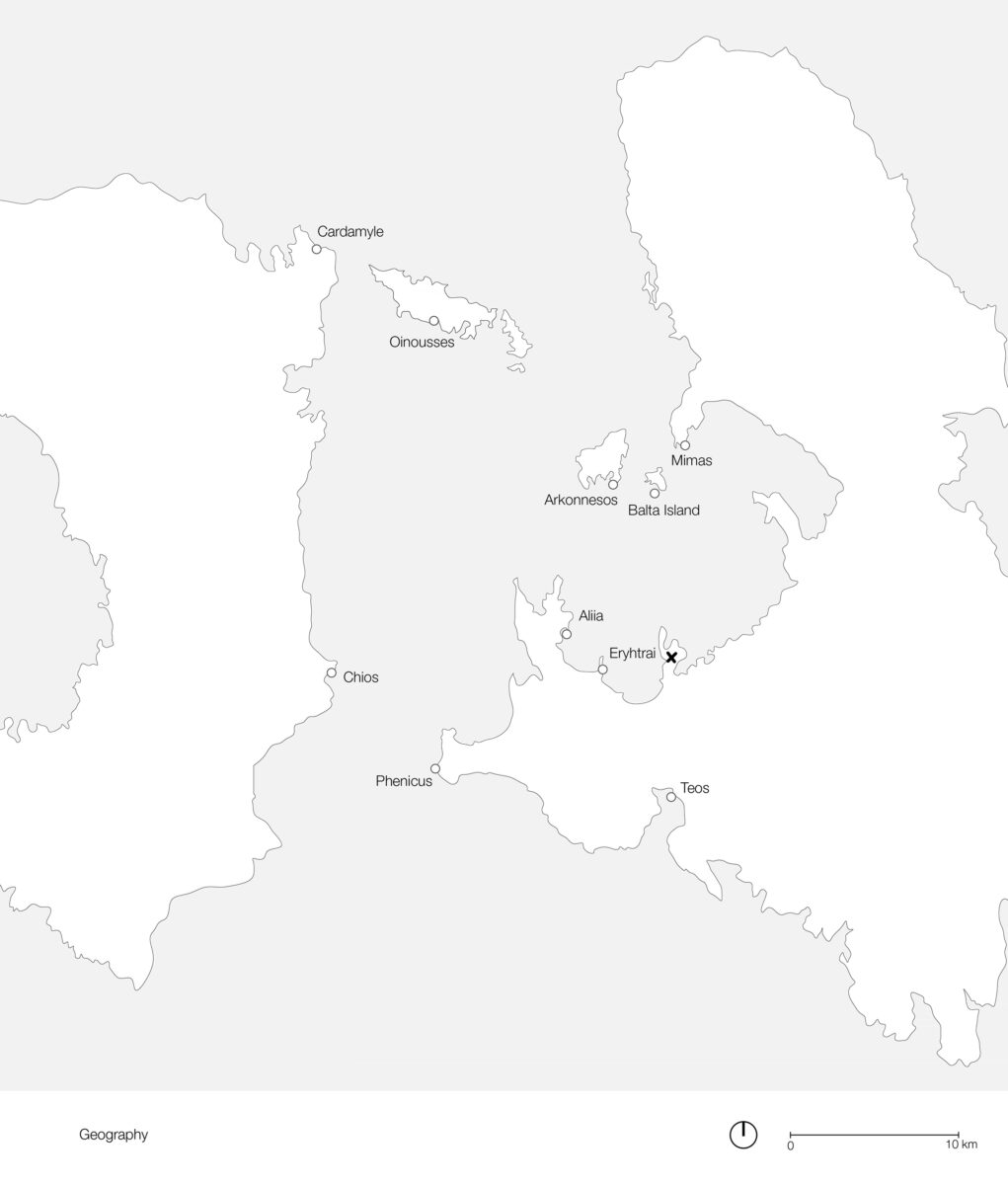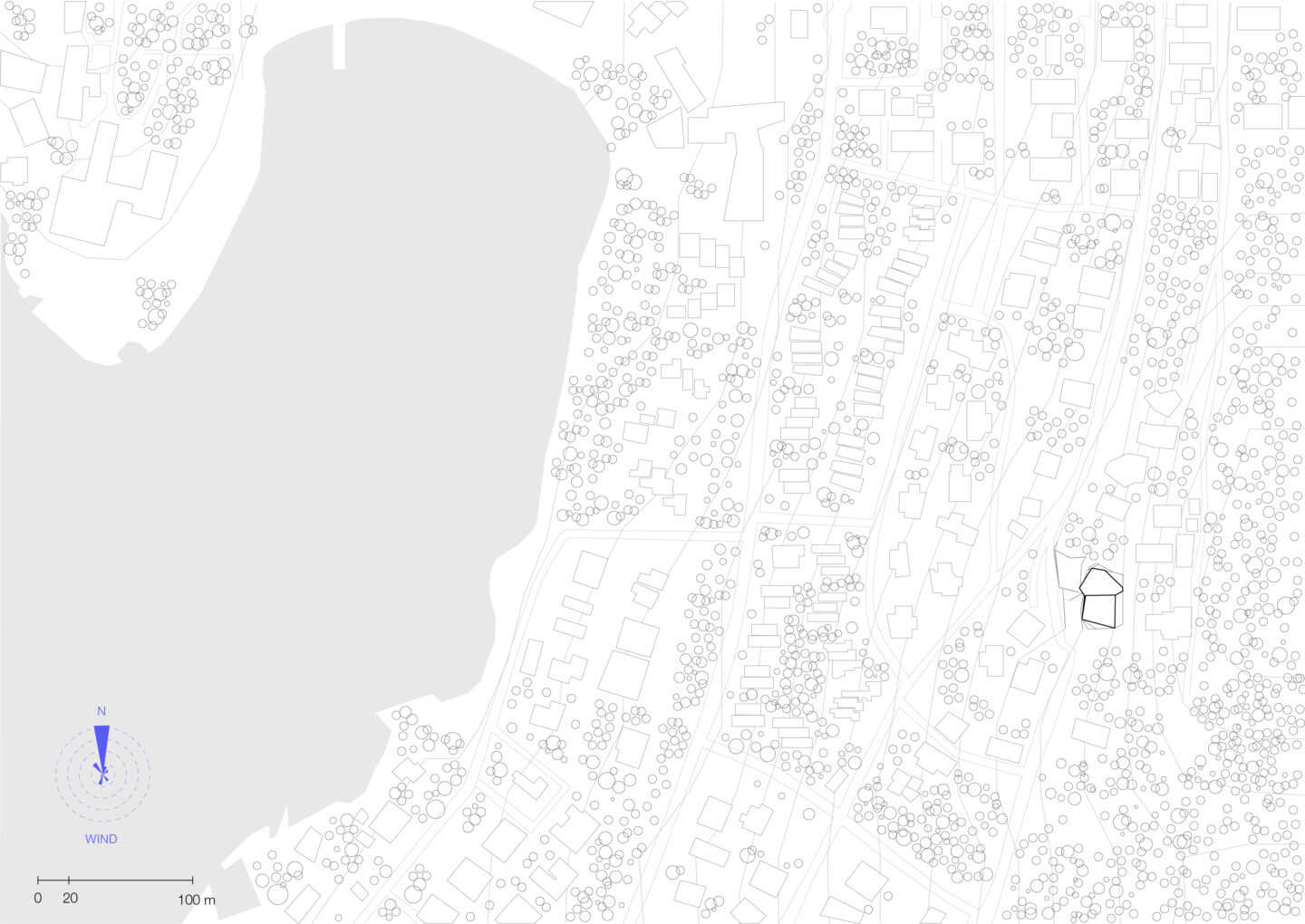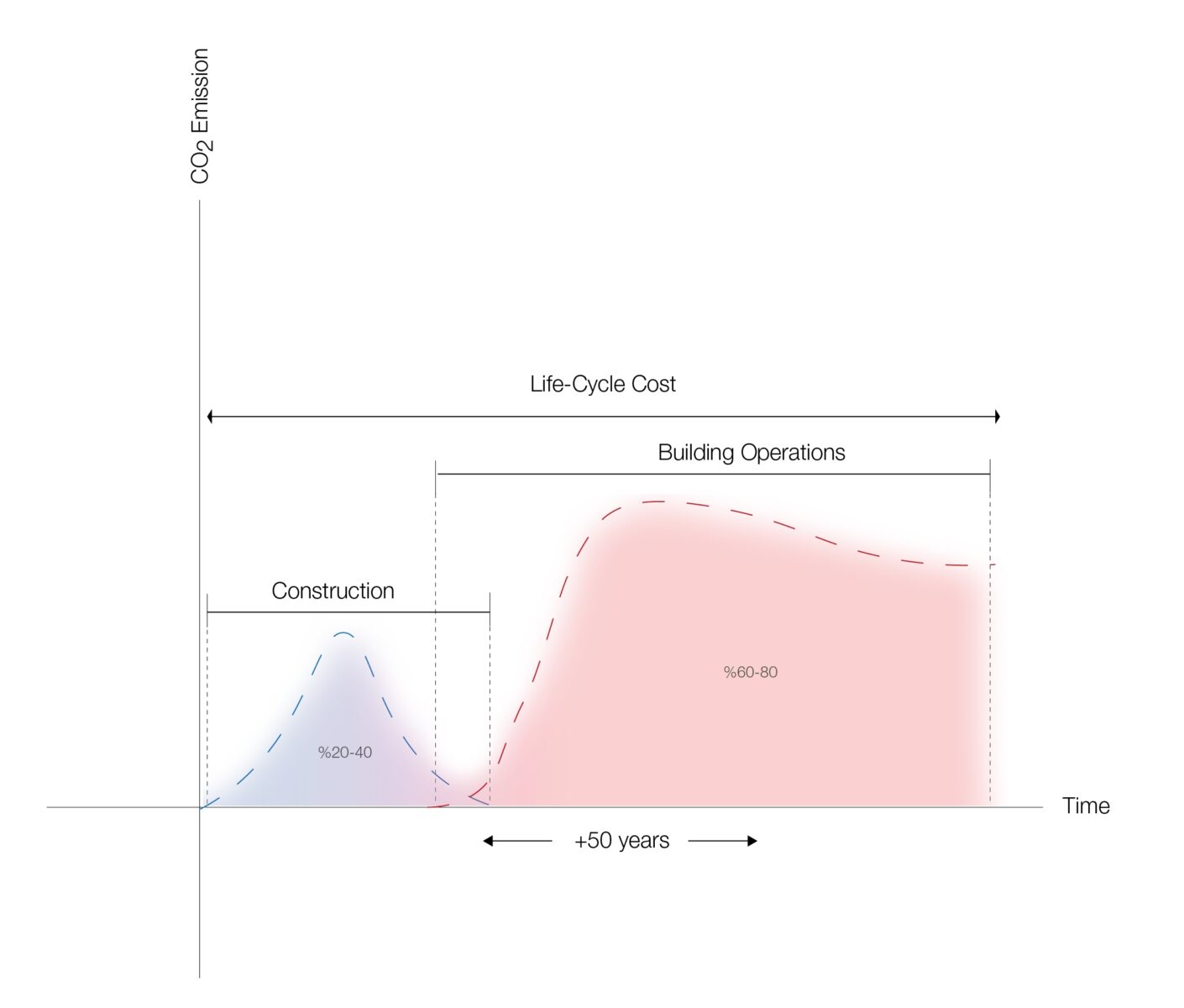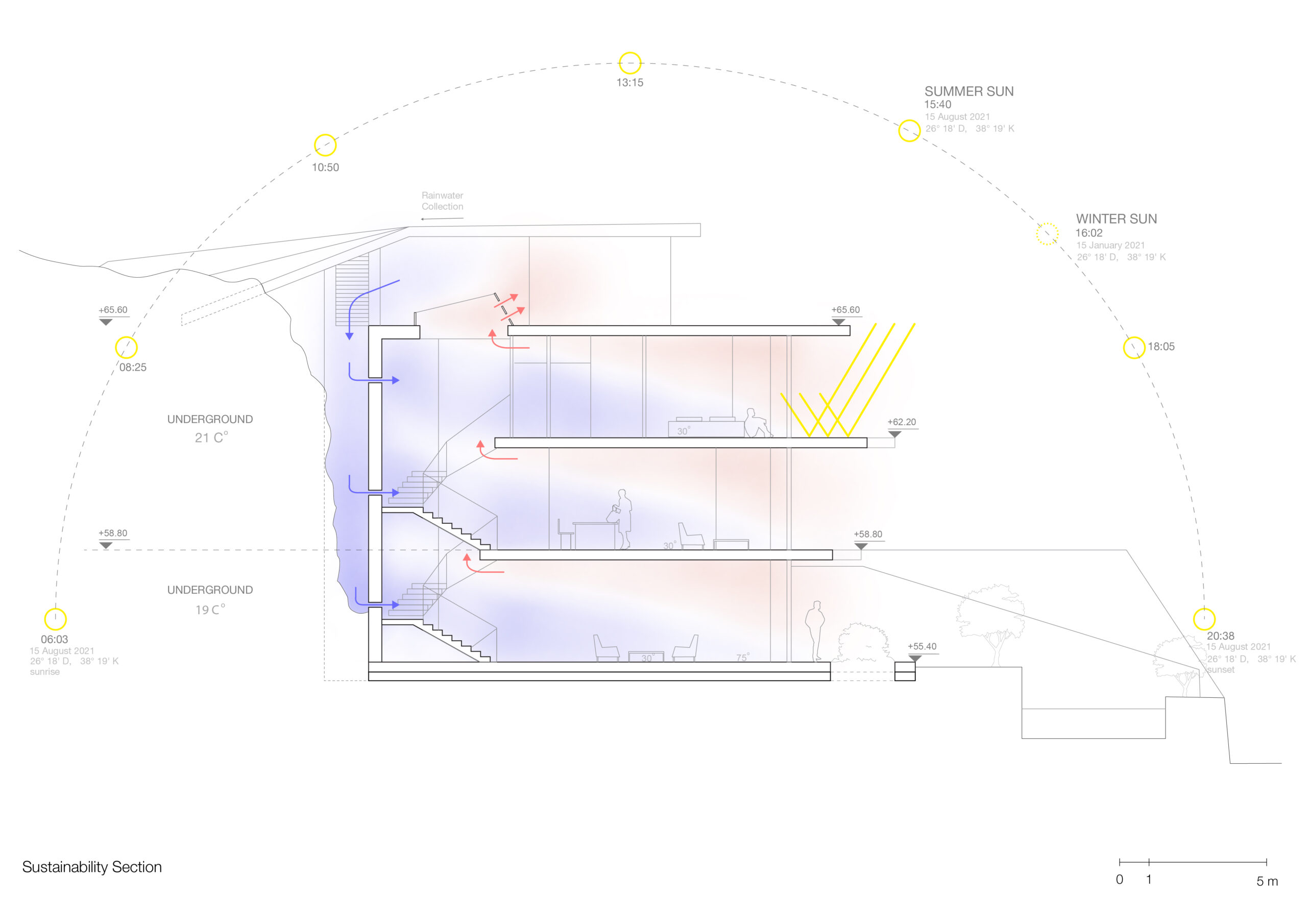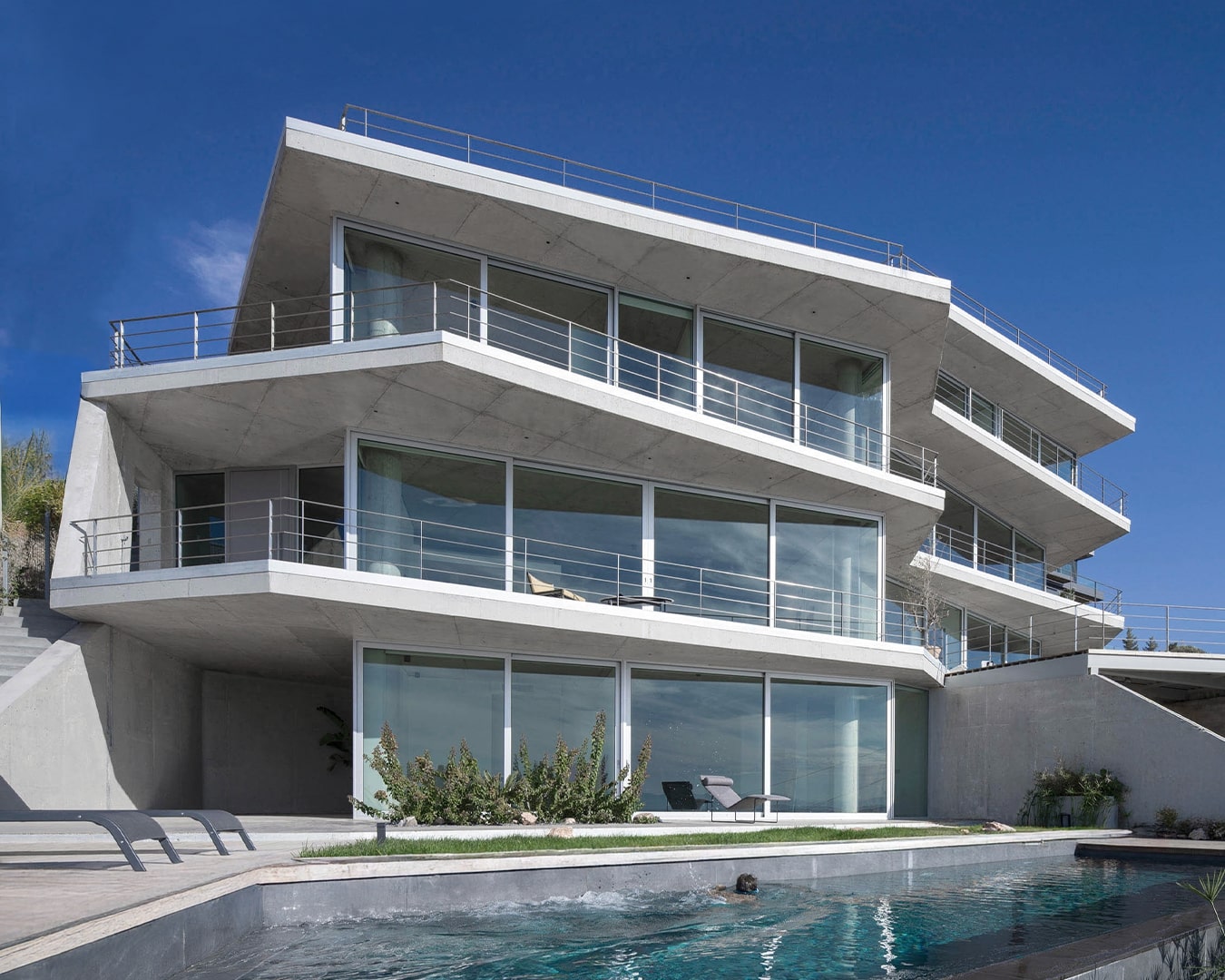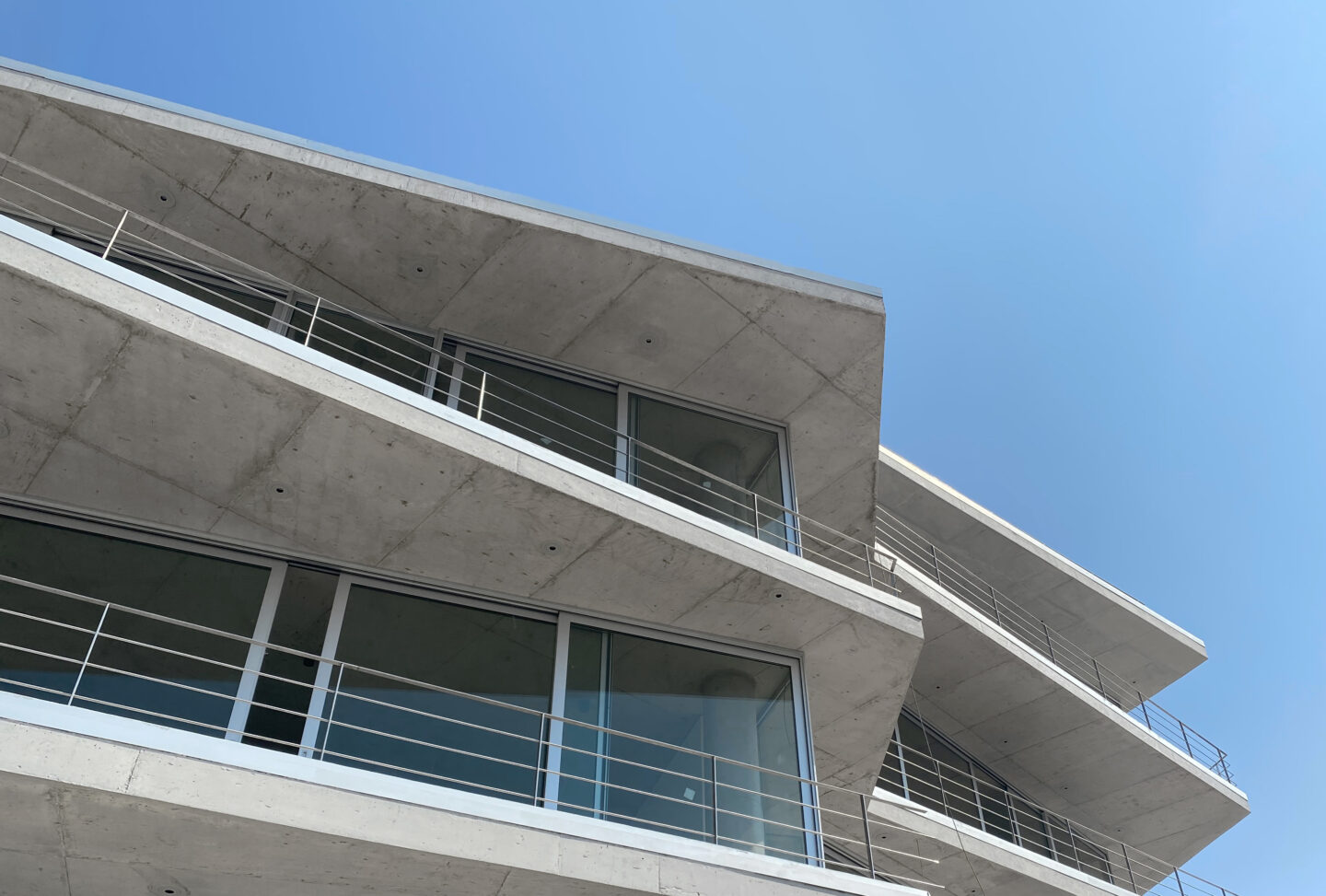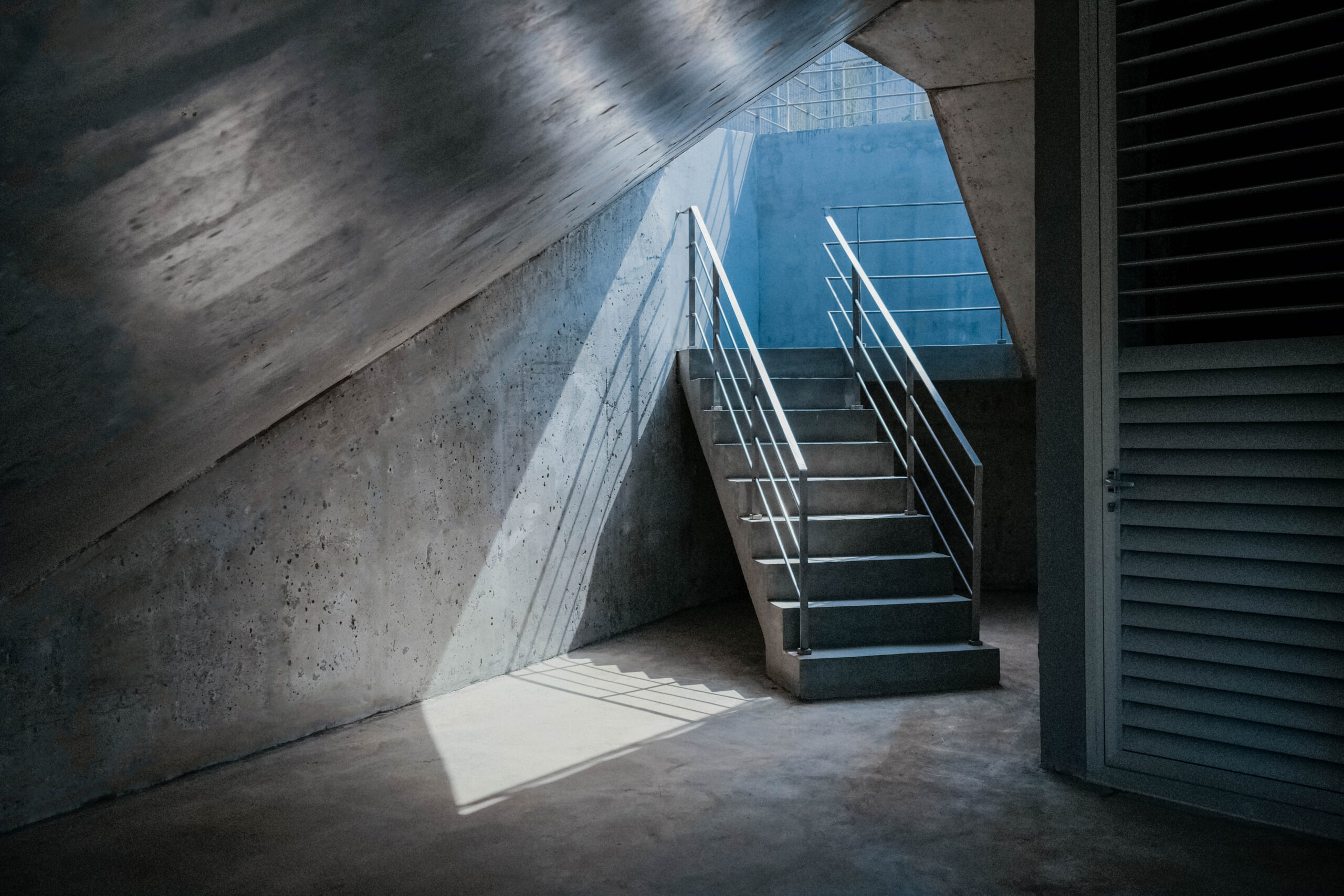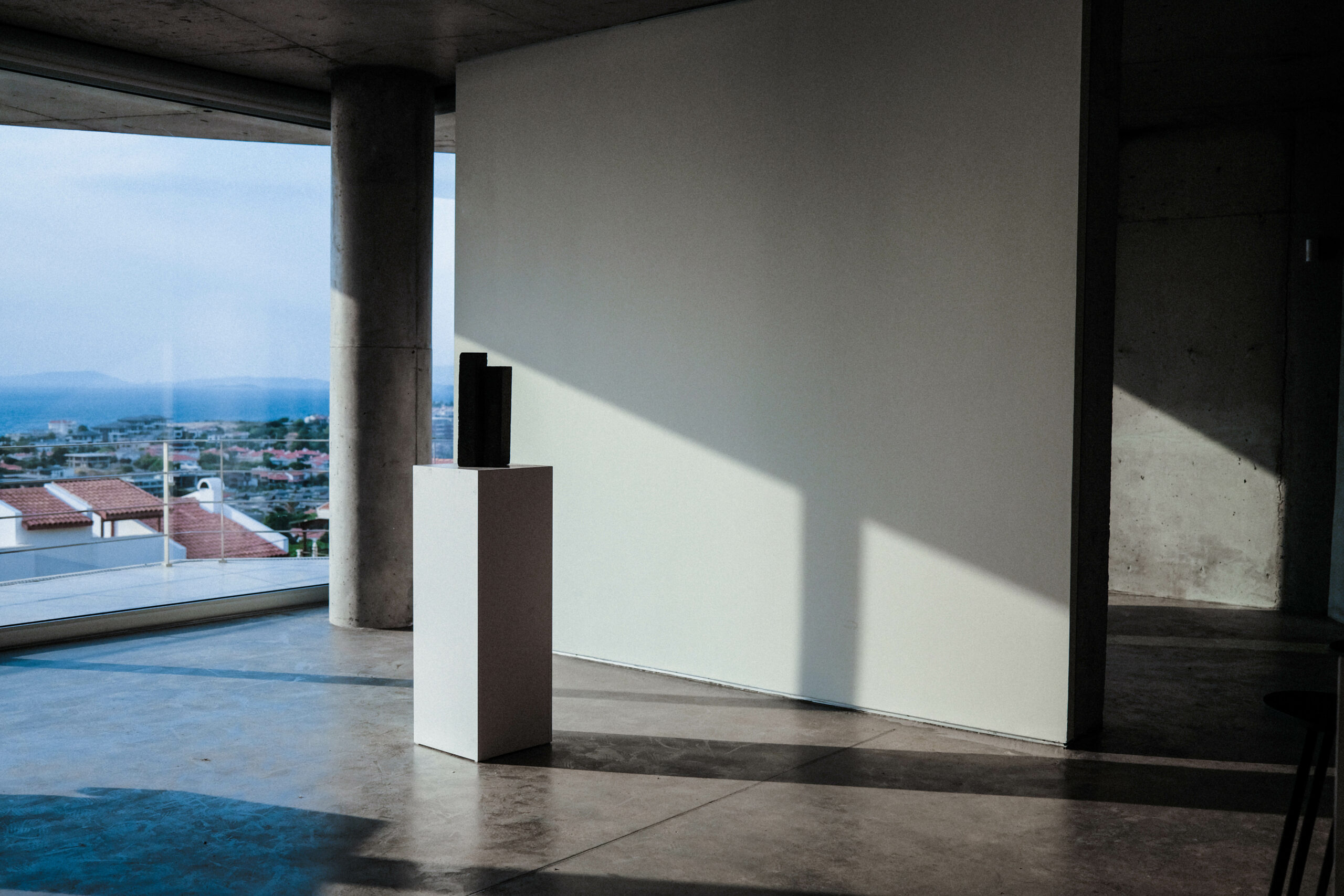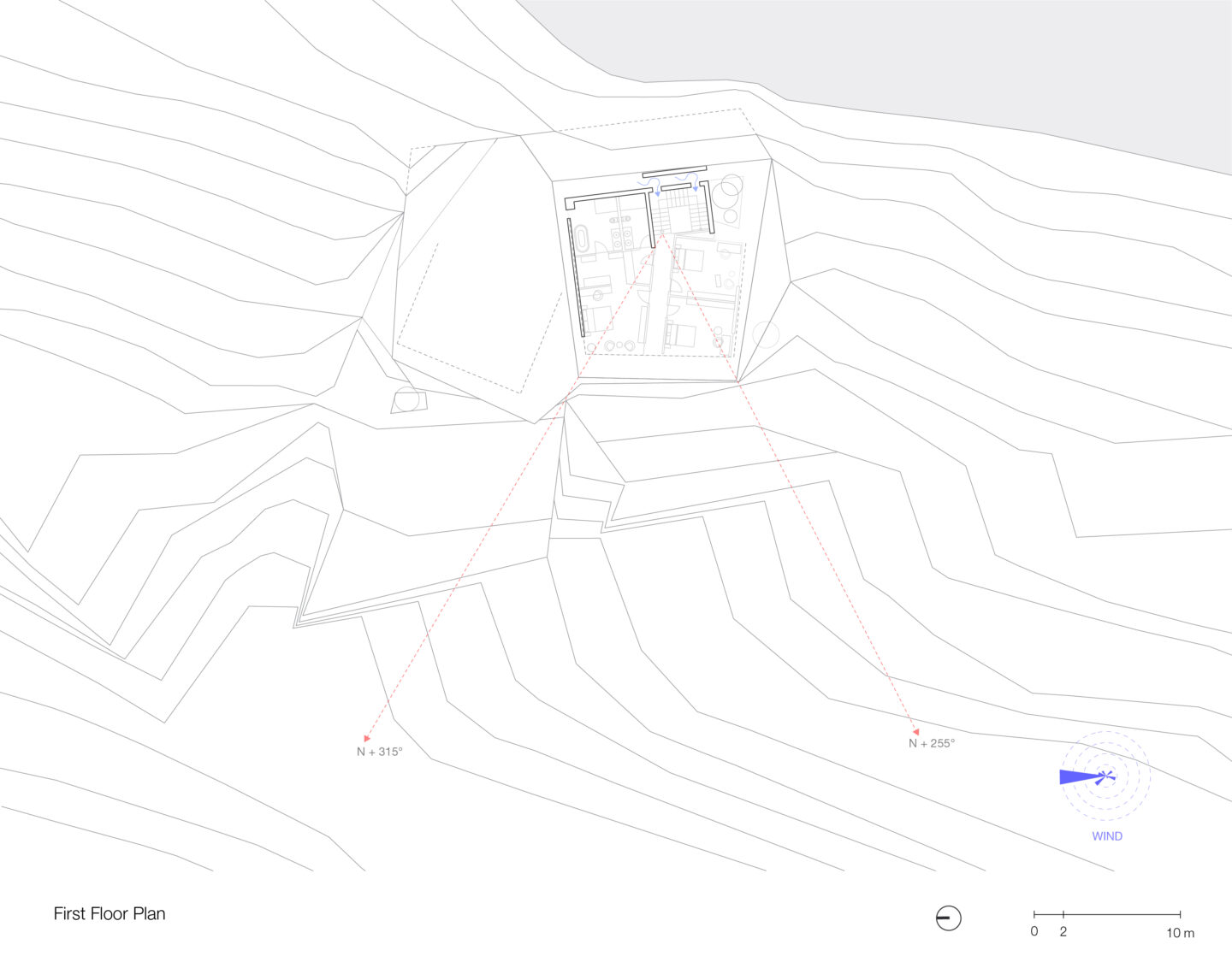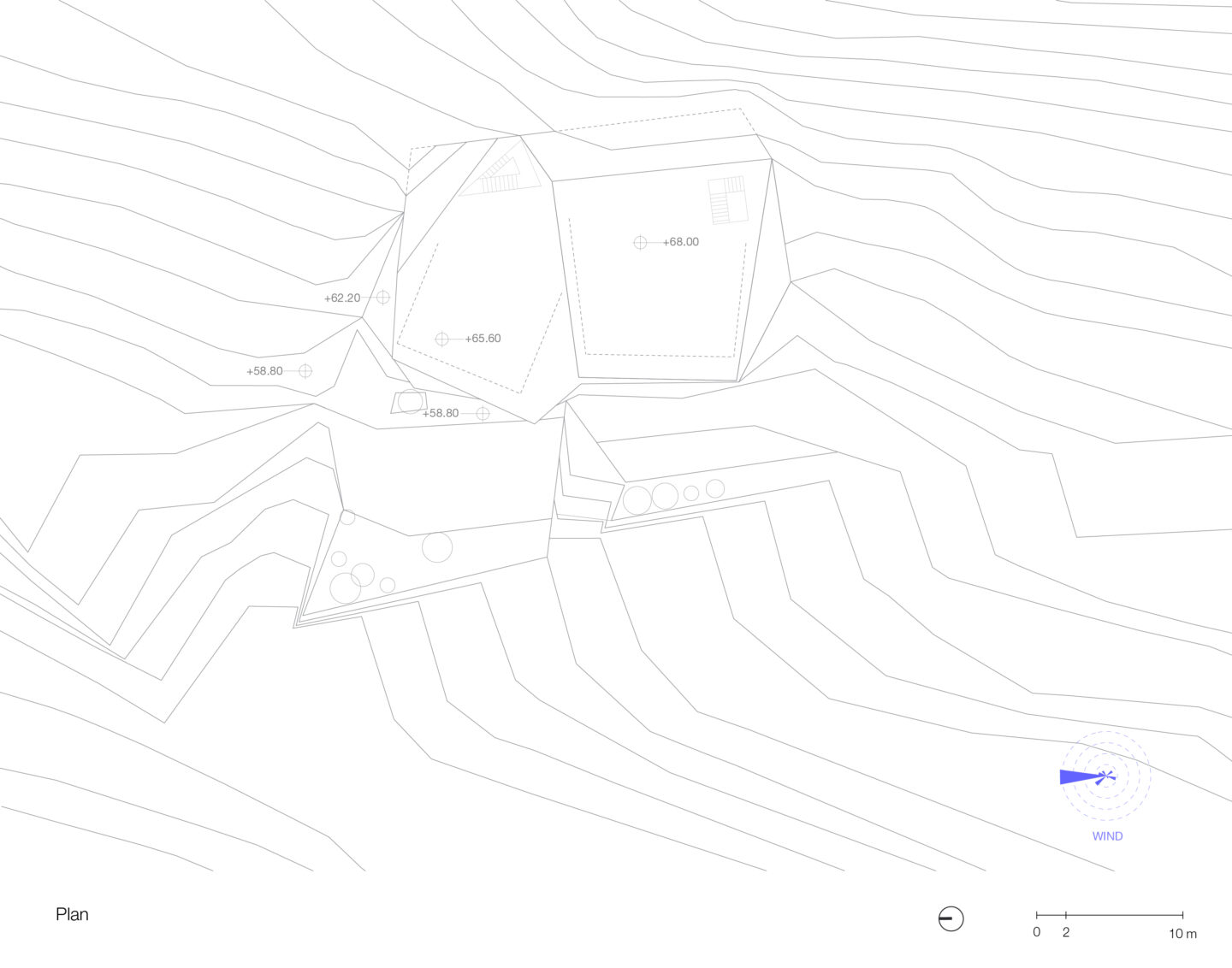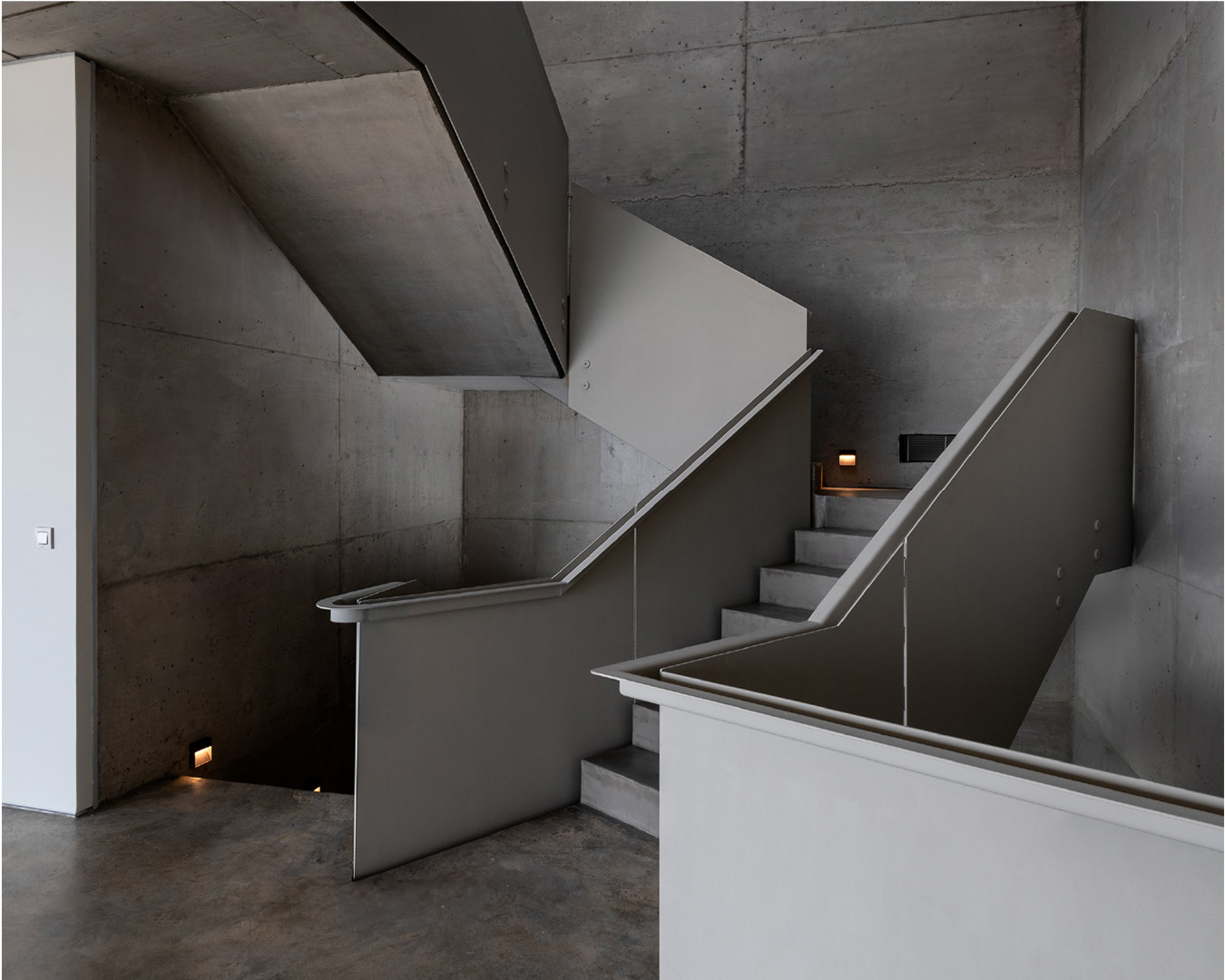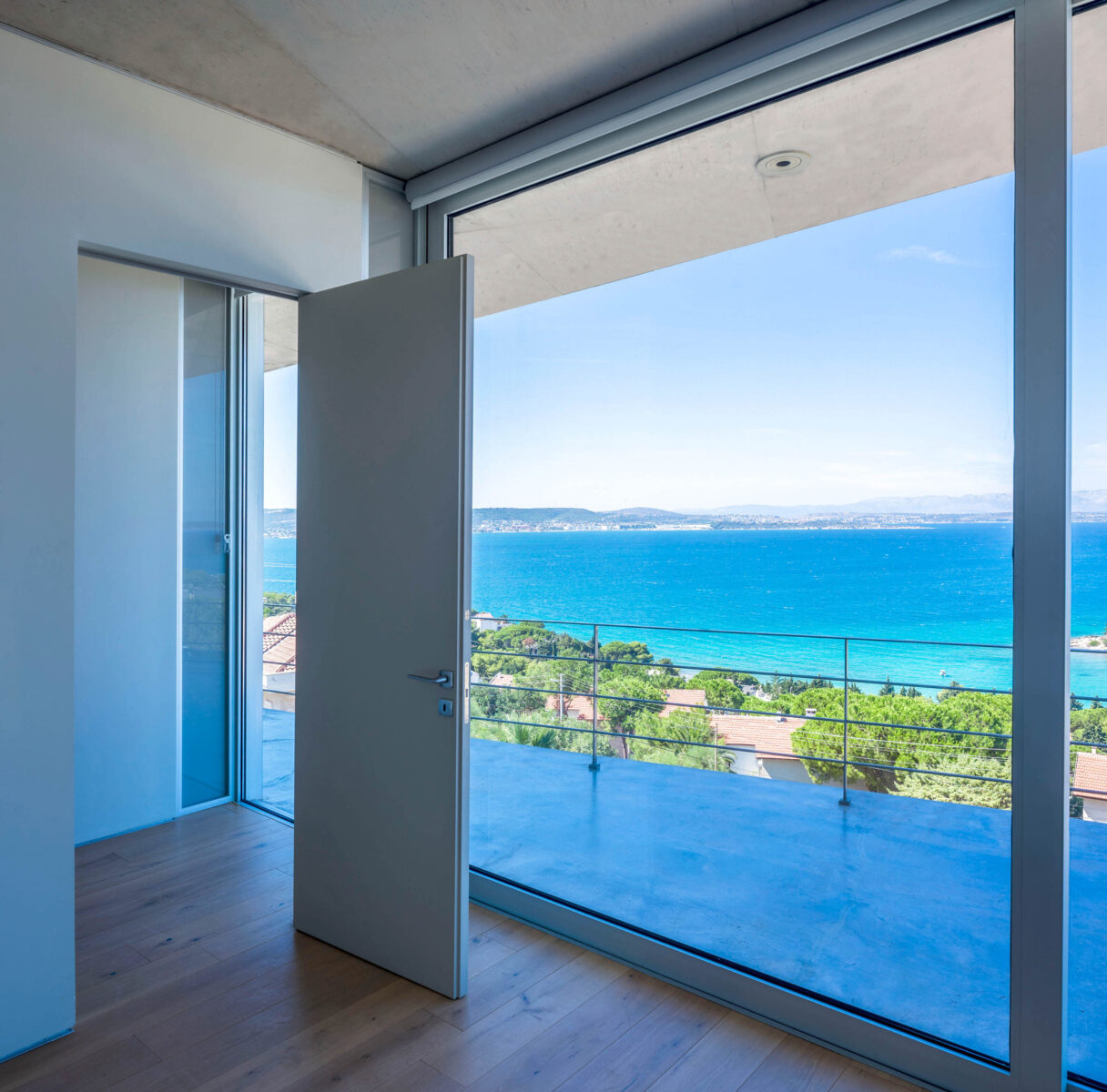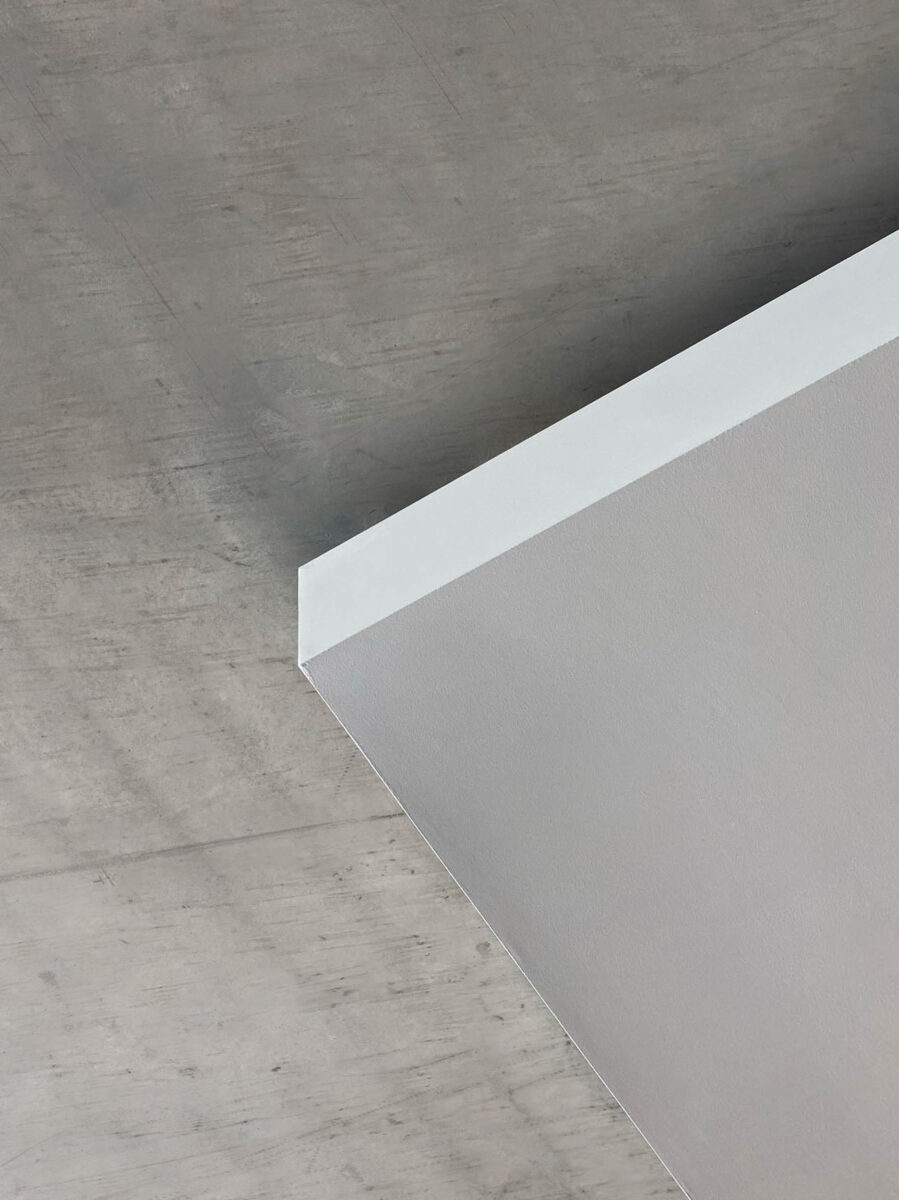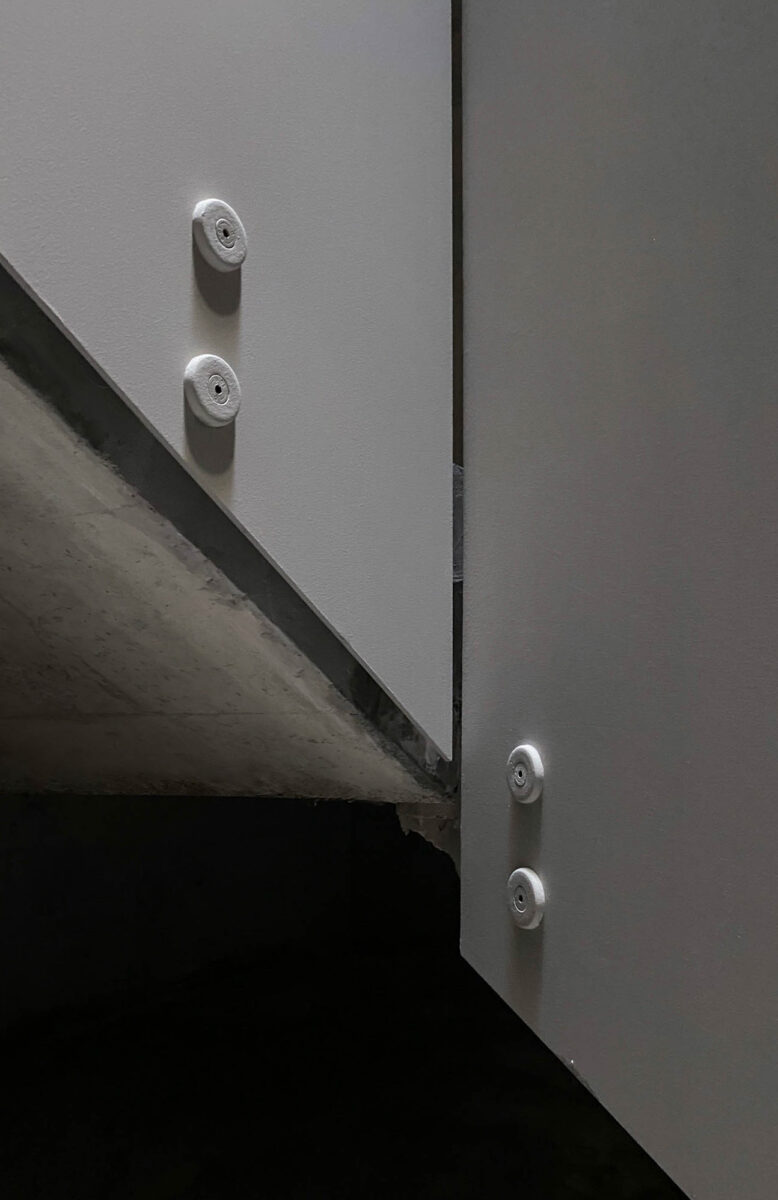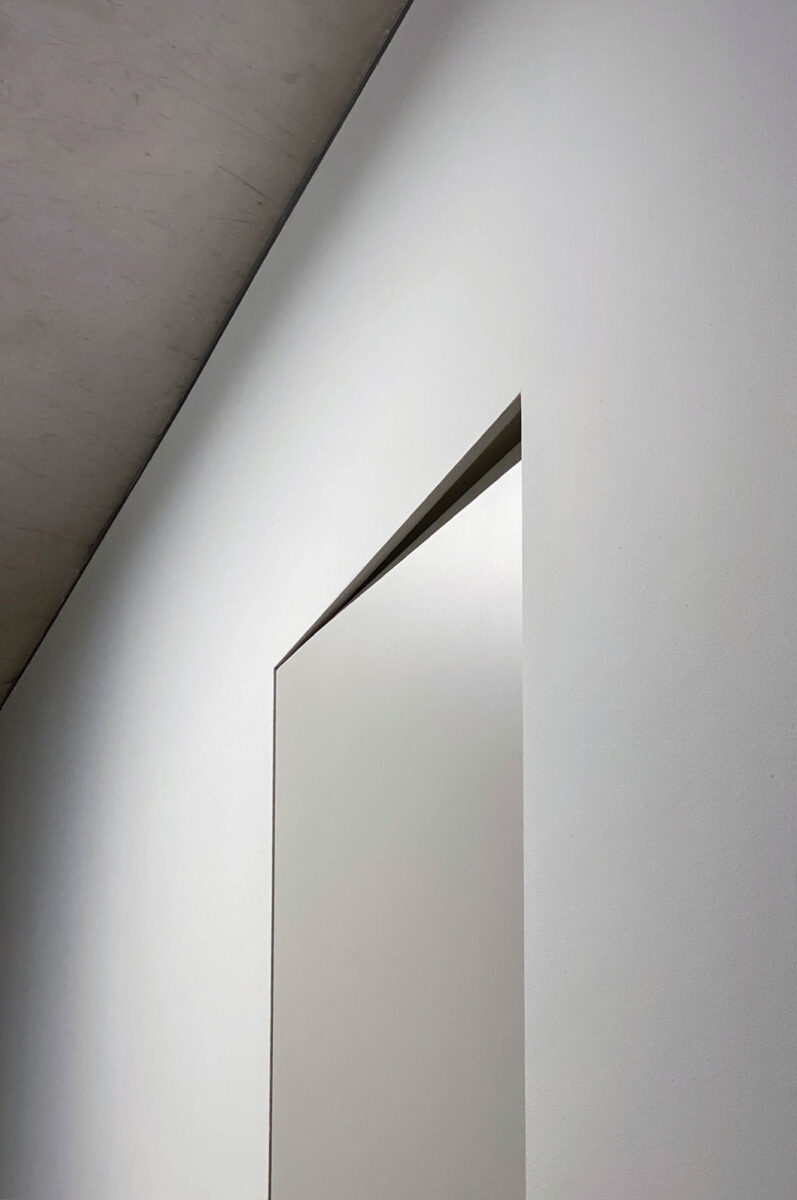Berrin Önder
Cemal Emden
Serra Duran
Villa Topos is a summer house project located on a limestone hill that overlooks the Paşalimanı Bay of İzmir in the Mediterranean coast of Turkey. The design takes inspiration from the sharp topography of the surroundings, transforming into a simple geometric structure that settles in the Aegean landscape. Villa Topos is buried into the topography to extend the relationship with the earth and to climatise the complete structure with zero operational carbon emission. The building develops terraces in the continuation of abstract topography lines in order to multiply the structure-ground encounterings, increase the open areas, and break the western sun to optimise the access.






Panorama and Staircase
The building has a unique panorama within the Aegean landscape, far from a flat horizon. As you climb up to the site; the horizon, skyline and landscape of the bay recreates itself in different ways. While placing the staircase at the back of the structure, the aim was to leave the stage open to nature and to propose a dynamic frame for the view. In this way, the staircase works as a cinematic apparatus that moves vertically, creating uninterrupted views of the bay.
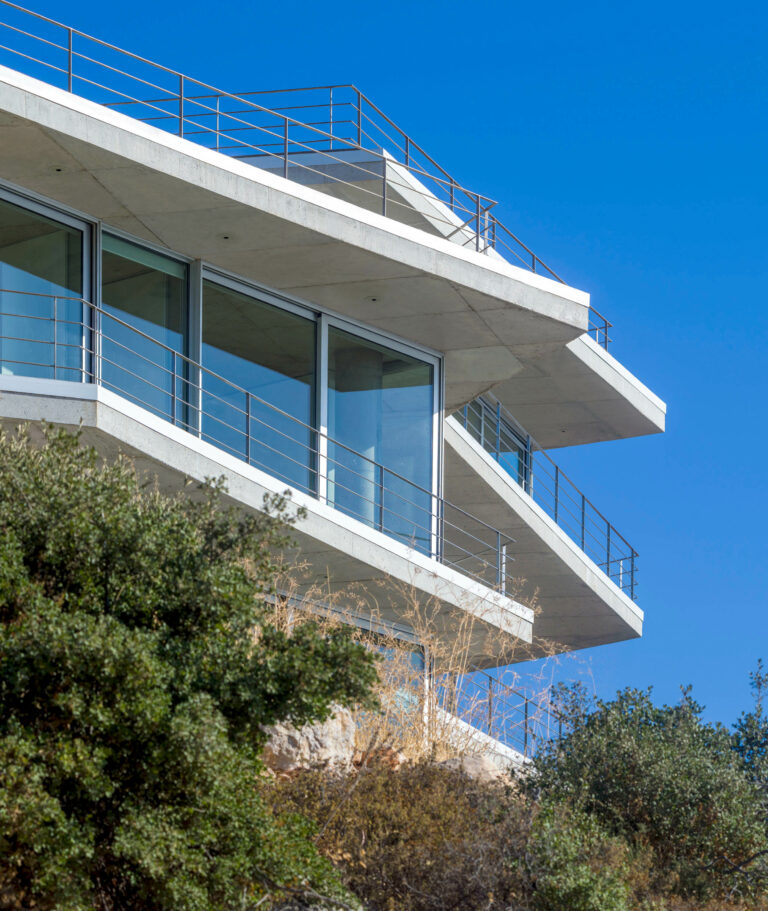
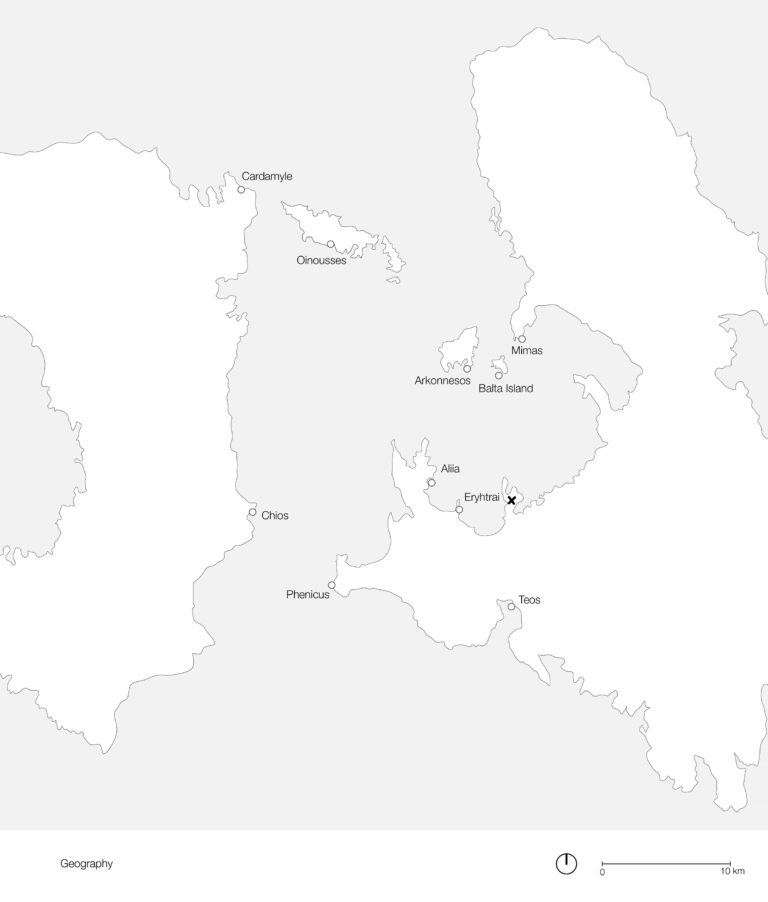
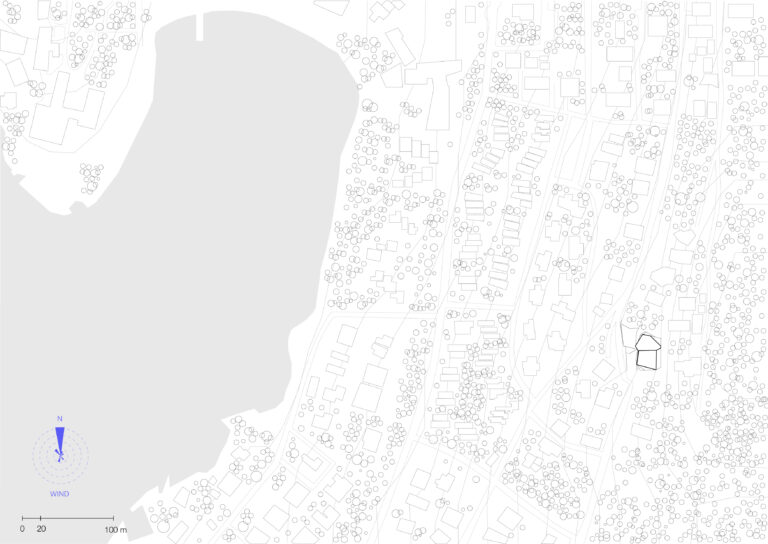
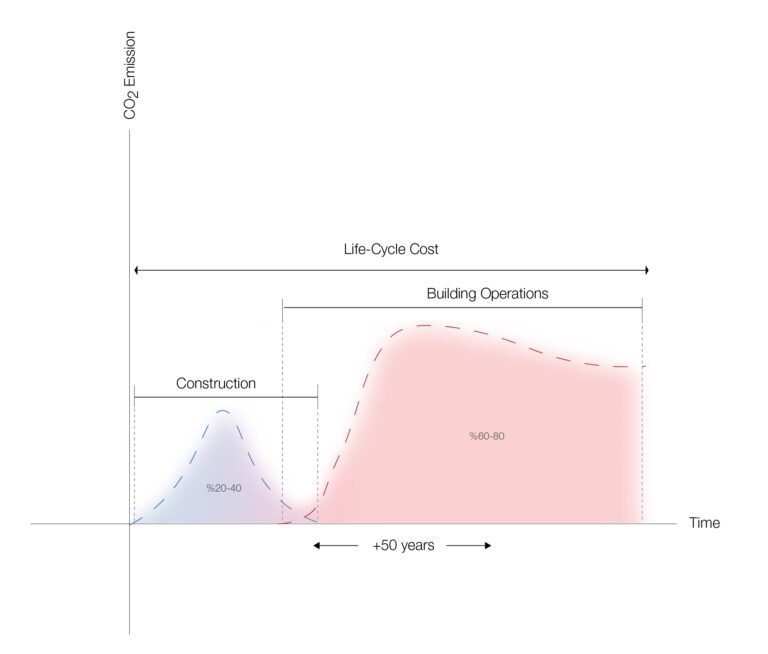
Active Heat Map Leading to Passive Climatization
The aim was not only to observe nature, but also to find foundational ways to better engage with it. Considering the fact that operational costs in the buildings correspond to a much greater portion in the amount of annual carbon emissions, a series of strategies have been developed in order to reduce operational emissions to zero. We developed a cross study in between structural design and energy simulation of the building in which the active heat map of the building is leading to exceptional solutions for passive climatisation.
The thermal mass settled under the ground provides heat stabilisation benefiting from the constant temperature of the earth. Wind-catching chimneys with vents in the roof are built to avoid using any energy to climatise the complete structure. They create a natural flow of ventilation throughout the building. As a result, the wind works as a natural machine to circulate clean air, and the earth works as another one to make the air cooler or warmer depending on the time of the year.
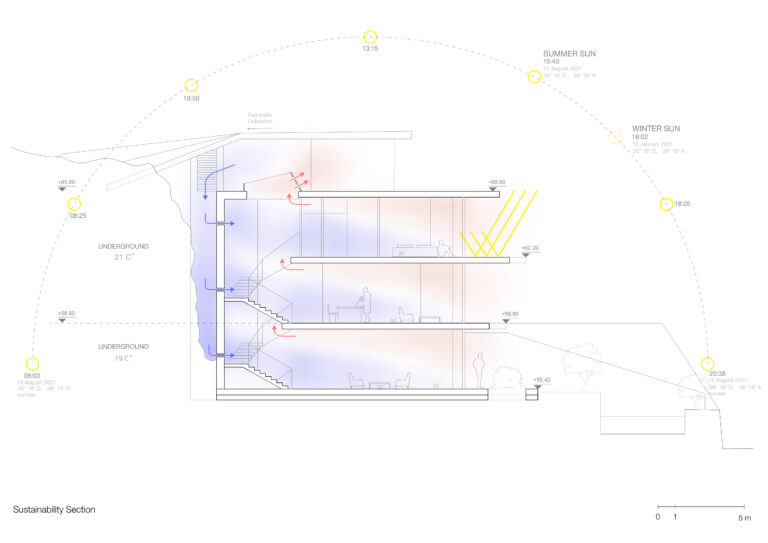
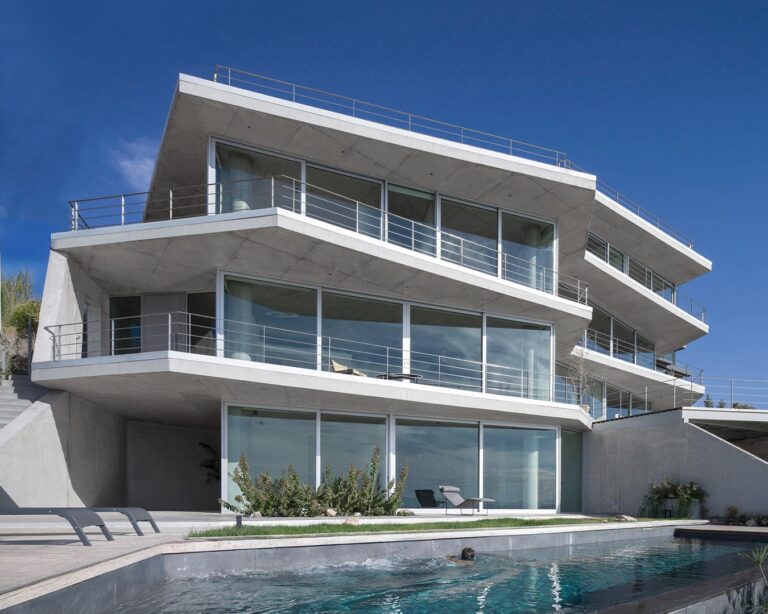
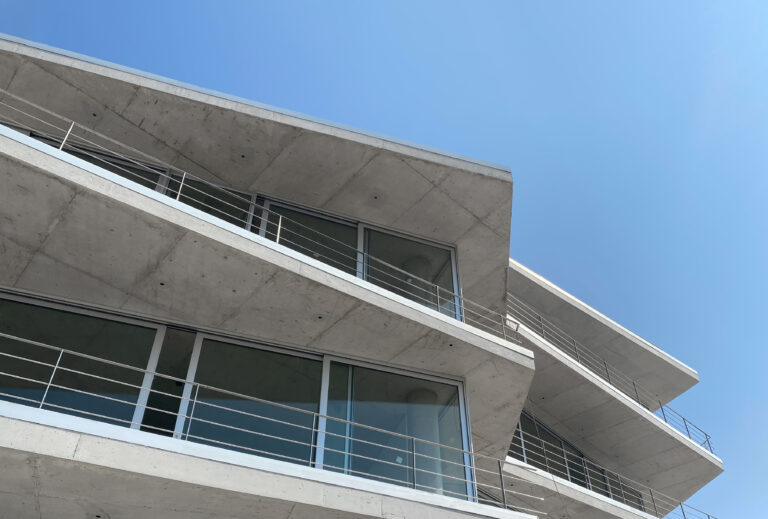
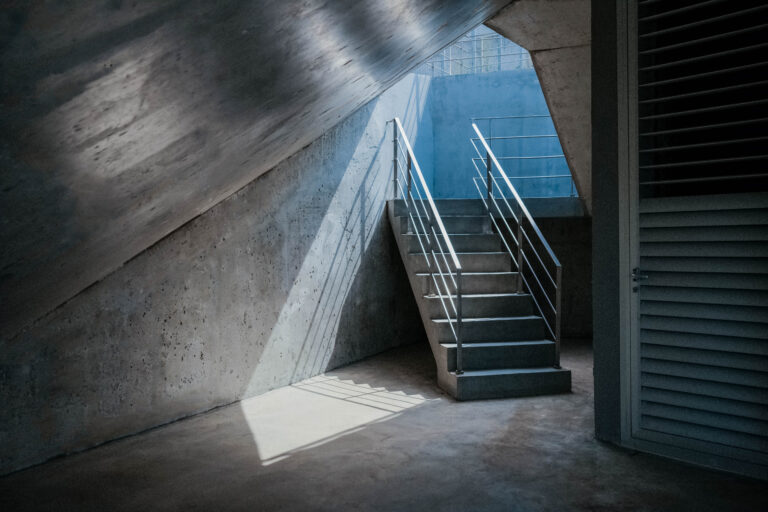
The solid mass of the concrete structure, that has a high value of specific heat capacity, increases the heat mass on the buried façade where the light cannot reach. The house takes about eight hours to catch the surrounding temperature, but this buried facade that had been cooled down over the night, cools the complete structure during the daytime. Thus, the thermal difference between day and night is balanced, and the reinforced concrete structure gives enough time to tolerate the changes.
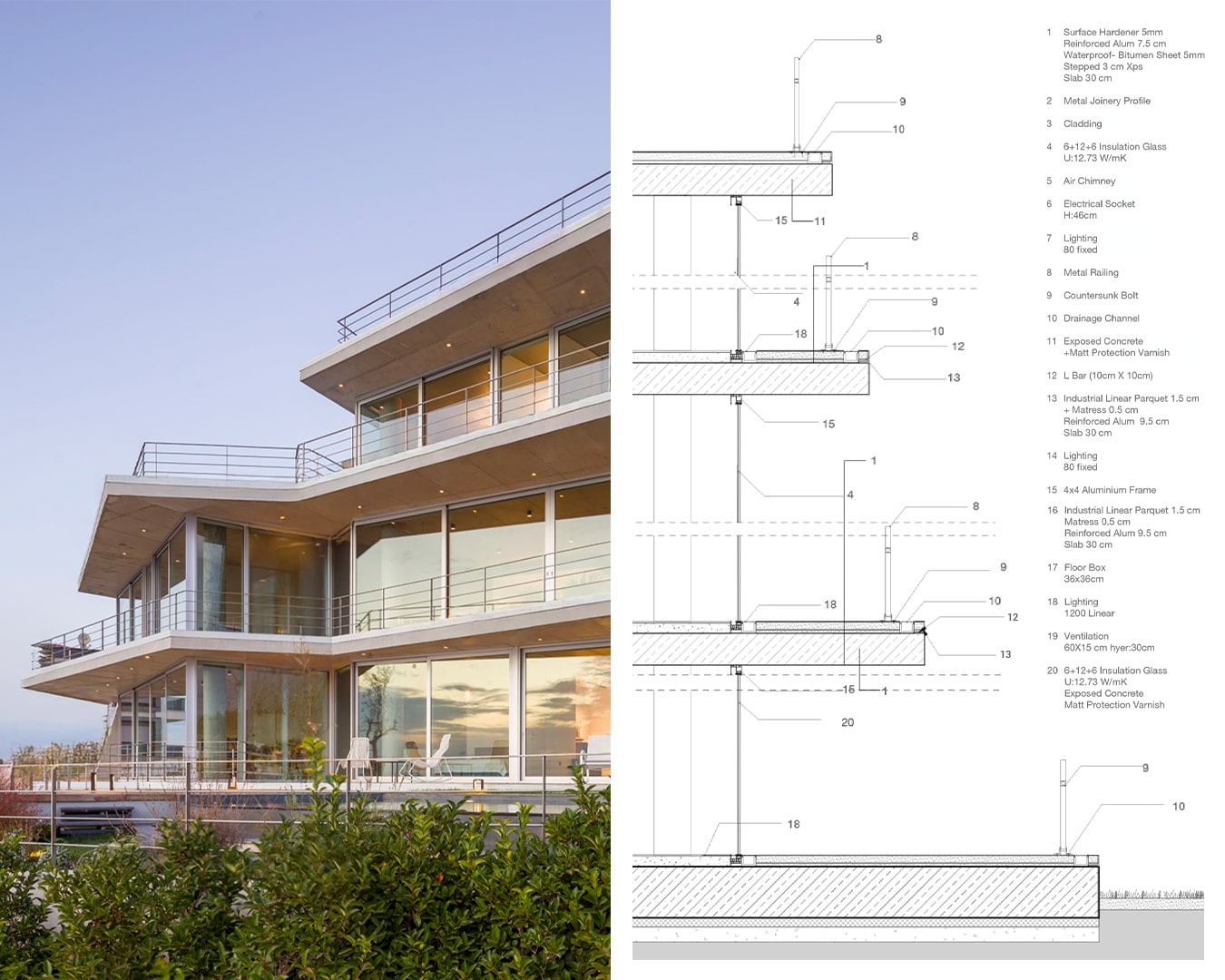
The in-between spaces in the building are non-uniform as in nature, away from producing spaces which are constant in conduct, character, or effect. The design offers large spaces in the interiors to give flexible uses where every object that is placed freely in the space will redefine the rooms.
